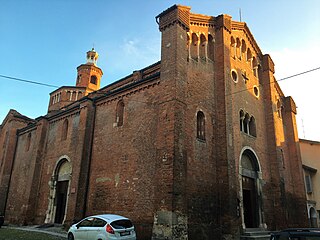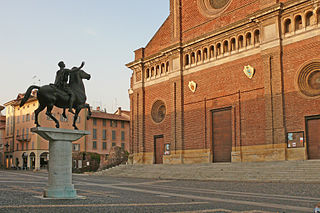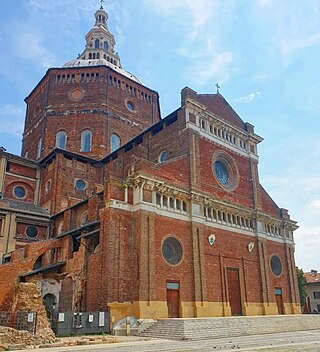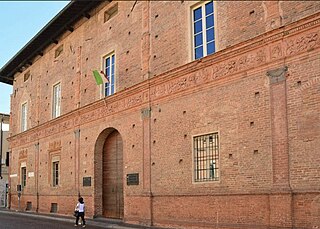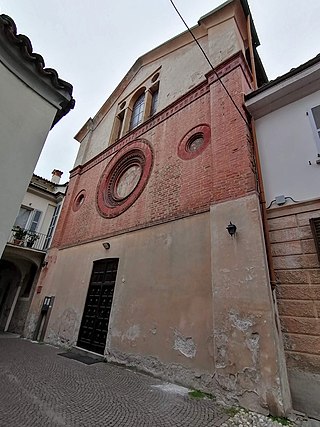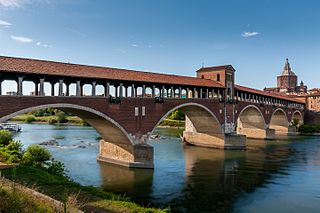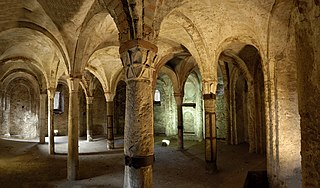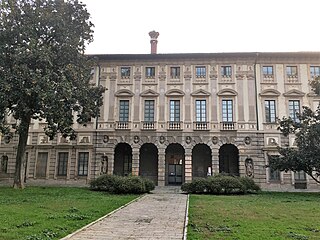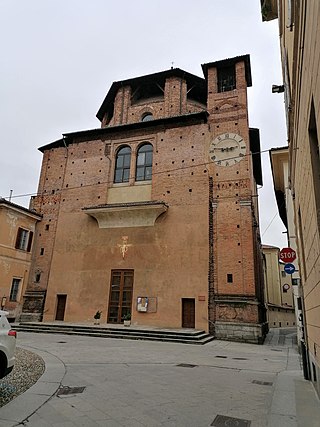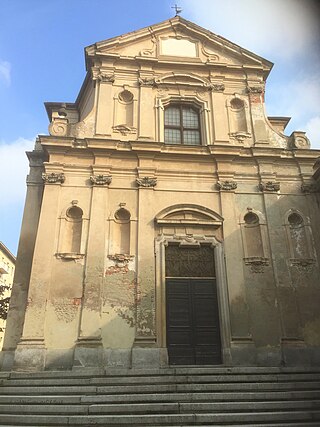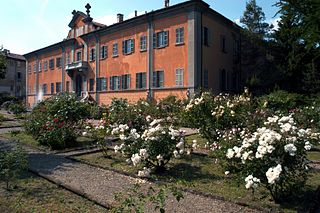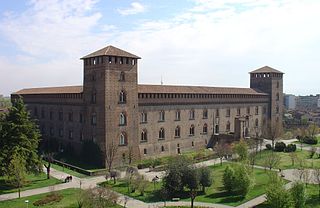Self-guided Sightseeing Tour #2 in Pavia, Italy
Legend
Tour Facts
4 km
40 m
Experience Pavia in Italy in a whole new way with our free self-guided sightseeing tour. This site not only offers you practical information and insider tips, but also a rich variety of activities and sights you shouldn't miss. Whether you love art and culture, want to explore historical sites or simply want to experience the vibrant atmosphere of a lively city - you'll find everything you need for your personal adventure here.
Activities in PaviaIndividual Sights in PaviaSight 1: Porta Calcinara
Porta Calcinara is one of the many gates of the ancient city walls of Pavia, overlooking the Ticino and still located today along the Lungoticino Visconti.
Sight 2: San Teodoro
San Teodoro is a Romanesque-style Roman Catholic church in the town center of Pavia, Italy.
Sight 3: Regisole
The Regisole was a bronze classical or Late Antique equestrian monument, highly influential during the Italian Renaissance. It was originally erected at Ravenna, in what is now Italy, but was moved to Pavia in the Middle Ages, where it stood on a column before the cathedral, as an emblem of communal pride and Pavia's deep connection with imperial Rome.
Sight 4: Cattedrale di Santo Stefano e Santa Maria Assunta
Pavia Cathedral is a church in Pavia, Italy, the largest in the city and seat of the Diocese of Pavia. The construction was begun in the 15th century on the site of two pre-existing Romanesque, "twin" cathedrals. The cathedral houses the remains of St. Sirus, first Bishop of Pavia, and a thorn purported to be from the Crown of Thorns worn by Christ. The marble facing of the exterior was never completed.
Sight 5: Broletto
The Broletto or Broletto Palace of Pavia, Italy has for centuries housed the civic government offices of this city found in the region of Lombardy, Italy. The term Broletto refers to a buildings equivalent to the town hall or town assembly.
Sight 6: Civic Tower

The Civic Tower was a tower built in the Italian city of Pavia in the 11th century, next to Pavia Cathedral. Built to a rectangular base, it was 72 metres high.
Sight 7: Palazzo Carminali Bottigella
Palace Carminali Bottigella is a noble palace built by the ancient Beccaria family from Pavia. The original structure from the Sforza era was built between 1490 and 1499. The façade, which retains the original terracotta decorations, is one of the major examples of Renaissance civil building in Pavia.
Sight 8: Chiesa di San Giovanni Domnarum
The church of San Giovanni Domnarum is one of the oldest in Pavia. In the crypt, which was rediscovered after centuries in 1914, remains of frescoes are visible.
Sight 9: Torre dell'Orologio
Pavia is a town and comune of south-western Lombardy, in Northern Italy, 35 kilometres south of Milan on the lower Ticino near its confluence with the Po. It has a population of c. 73,086.
Sight 10: Cripta di San Eusebio
The church of Sant'Eusebio was a church of Pavia, of which today only the crypt remains. The church was probably built by the Lombard king Rothari (636-652) as the city's Arian cathedral. It later became the fulcrum of the conversion to Catholicism of the Lombards initiated by Theodolinda and the monks of San Colombano and which later received, precisely in Pavia, a great impulse from King Aripert I (653-661) and from Bishop Anastasius.
Sight 11: Palazzo Del Maino
Palazzo del Maino is a Baroque palace in Pavia, in Lombardy.
Sight 12: Chiesa di Santa Maria Incoronata di Canepanova
Santa Maria di Canepanova is a Renaissance-style Roman Catholic church located in central Pavia, region of Lombardy, Italy. Although in the past the design was popularly attributed to Bramante, the church was designed by Giovanni Antonio Amadeo.
Sight 13: Santi Giacomo e Filippo
San Giacomo e Filippo is a Baroque-style Roman Catholic church in the town center of Pavia, Italy.
Sight 14: Monastero di santa Maria delle Cacce
The monastery of Santa Maria delle Cacce is located in Pavia near the Spanish Walls.
Sight 15: Orto Botanico
The Orto Botanico dell'Università di Pavia also known as the Orto Botanico di Pavia, is a botanical garden maintained by the University of Pavia. It is located at Via S. Epifanio, 14, Pavia, Italy, and is open to the public on weekends. The botanical garden covers an area of about two hectares and has approximately two thousand different species of plants, which are organised in sections. The current director is Francesco Sartori.The Botanical Garden stands in the place where the church of Saint Epiphanius was located, of which it preserves the cloister of the 15th century.
Sight 16: Pinacoteca Malaspina
The Pinacoteca Malaspina is the civic art gallery of Pavia. It is a section of the Civic Museums of Pavia, housed inside the Visconti Castle.
Sight 17: Castello Visconteo
The Visconti Castle of Pavia is a medieval castle in Pavia, Lombardy, Northern Italy. It was built after 1360 in a few years by Galeazzo II Visconti, Lord of Milan, and used as a sovereign residence by him and his son Gian Galeazzo, first duke of Milan. Its wide dimensions induced Petrarch, who visited Pavia in the fall of 1365, to call it "an enormous palace in the citadel, a truly remarkable and costly structure". Adjacent to the castle, the Visconti created a vast walled park that reached the Certosa di Pavia, a Carthusian monastery founded in 1396 by the Visconti as well and located about 7 kilometres (4.3 mi) to the north.
Share
How likely are you to recommend us?
Disclaimer Please be aware of your surroundings and do not enter private property. We are not liable for any damages that occur during the tours.
GPX-Download For navigation apps and GPS devices you can download the tour as a GPX file.

